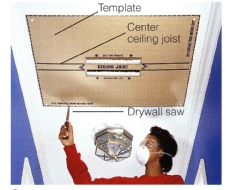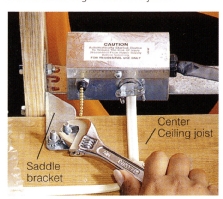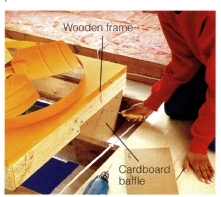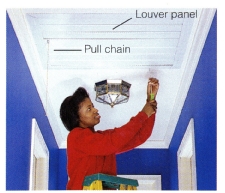|
Whole-house fans are an economical, energy-efficient alternative to air-conditioning. In some regions, it may be the only cooling mechanism you need; in others, it can shorten the length of time you need to run your air conditioner and save hundreds of dollars annually. Capacity. Whole-house fans come in different sizes to accommodate different attic construction and house sizes. Increase the convenience by installing a timer or thermostat. Fans are sold according to their cubic feet per minute (CFM) capacity, which indicates how much air they move. Depending on the climate, you need a fan that will change the air in your house every two to three minutes. To determine the CFM requirement, take the total above- ground square footage and multiply it by three for moderate climates or four for warmer climates. Location. For this type of fan to work effectively, install it in a central location on the upper level of the house; usually the hallway that leads to the bedrooms. Check for obstructions in the attic after you’ve determined the best location. In cold climates, make certain the units can be tightly sealed and insulated during heating season. Operation. Use a whole-house fan only when the outside temperature is cooler than the inside temperature. To use it, shut off the air-conditioning and , in the rooms you want cooled, open the windows about 2 to 3 in. (5 to 7.5 cm) and block open the doors. Caution: Don’t use the fan when windows are closed. This will cause interior air to be exhausted without being replaced with fresh outside air. When this happens, back-drafting can occur, which means deadly carbon monoxide fumes given off by water heaters and other gas-burning appliances may be drawn into your home rather than exhausted through their venting systems. |
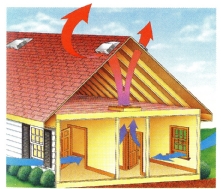 Above: How attic fans cool. Attic fans cool by pulling cooler, outside air in through windows that are open by 2 to 3 in. (5 to 7.5 cm) and drawing the warm air in the house up into the attic. The warm air in the attic then exhausts under pressure through vents in the roof.
|


